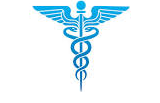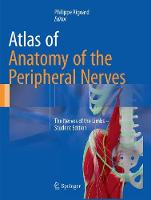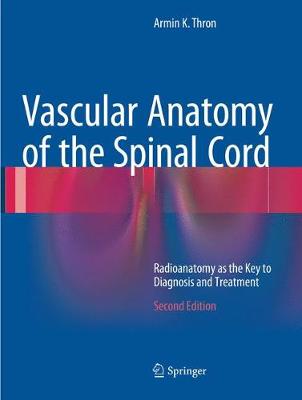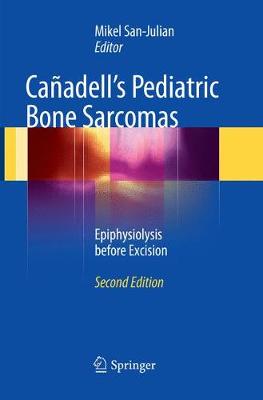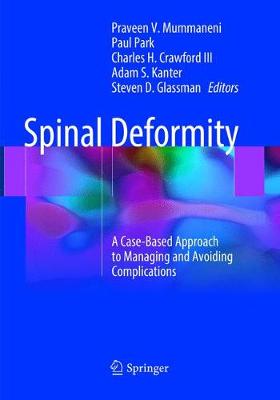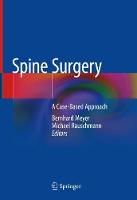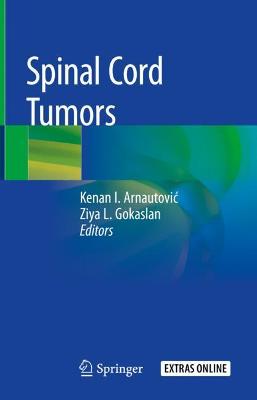Atlas of Anatomy of the Peripheral Nerves
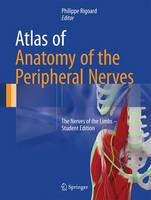 -15%
portes grátis
-15%
portes grátis
Atlas of Anatomy of the Peripheral Nerves
The Nerves of the Limbs - Student Edition
Rigoard, Philippe
Springer International Publishing AG
10/2017
322
Dura
Inglês
9783319430881
15 a 20 dias
Part I : Morphological and functional anatomy of the peripheral nerve1. The normal nerve 1.1. General organisation of the peripheral nerve1.2. The nerve's structure and physiology 1.3. Schwann cell and myelinisation1.4. Mechanical properties of the nerves1.5. Vascularization of the peripheral nerve 1.6. Neuromuscular junction and transmission<1.7. Main mechanisms of synaptic formation 2. The injured nerve2.1. Physiology of the damaged nerve2.2. Nerve degeneration2.3. Mechanisms of neuronal reparation3. The Plexus 3.1. Data issued from embryology3.2. Development of the innervation of limbs3.3. Innervation of the limbs in adults3.4. The notion of plexus
Part II: Nerves of the upper limb 1. The brachial plexus1.1. Morphological data 1.2. The brachial plexus' relations 1.2.1 At the supraclavicular level1.2.2 At the infraclavicular level2. The axillary nerve2.1. Morphological data2.1.1 Origin2.1.2 Path2.1.3 Neurovascular relation2.1.4 Collateral branches2.1.5 Terminal branches2.1.6 Motor function 2.1.7 Sensitive function2.1.8 Anastomoses2.2. Pathology2.2.1 Etiology2.2.2 Clinical significance 2.2.3 Clinical forms2.2.4 Complementary examinations2.2.5 Treatment3. The musculocutaneous nerve3.1. Morphological data3.1.1 Origin3.1.2 Path3.1.3 Neurovascular relation3.1.4 Collateral branches3.1.5 Terminal branches3.1.6 Motor function 3.1.7 Sensitive function3.1.8 Anastomoses3.2 Pathology 3.2.1 Etiology3.2.2 Clinical significance 3.2.3 Clinical forms3.2.4 Complementary examinations3.2.5 Treatment4 The radial nerve4.1 Morphological data 4.1.1 Origin4.1.2 Path4.1.3 Neurovascular relation4.1.4 Collateral branches4.1.5 Terminal branches4.1.6 Motor function 4.1.7 Sensitive function4.1.8 Anastomoses4.2 Pathology 4.2.1 Posterior interosseous nerve syndrome4.2.2 Etiology4.2.3 Clinical signs4.2.4 Clinical forms4.2.5 Complementary examinations4.2.6 Treatment5 The median nerve5.1 Morphological data 5.1.1 Origin5.1.2 Path5.1.3 Neurovascular relation5.1.4 Collateral branches5.1.5 Terminal branches5.1.6 Motor function 5.1.7 Sensitive function5.1.8 Anastomoses5.2 Pathology 5.2.1 Anterior interosseous nerve syndrome5.2.2 Etiology5.2.3 Clinical significance5.2.4 Clinical forms5.2.5 Complementary examinations5.2.6 Treatment5.3 Carpal tunnel syndrome5.3.1 Clinical signs5.3.2 Differential diagnosis5.3.3 Treatment
6 The ulnar nerve6.1 Morphological data 6.1.1 Origin6.1.2 Path6.1.3 Neurovascular relations6.1.4 Collateral branches6.1.5 Terminal branches6.1.6 Motor function 6.1.7 Sensitive function5.1.8 Anastomoses6.2 Pathology 6.2.1 Cubital tunnel syndrome6.2.2 Etiology6.2.3 Clinical significance6.2.4 Clinical forms6.2.5 Complementary examinations6.2.6 Treatment6.3 Ulnar tunnel syndrome (Guyon's canal)6.3.1 Etiology6.3.2 Clinical signs6.3.3 Clinical forms6.3.4 Complementary examinations6.3.5 Treatment
7 The suprascapular nerve7.1 Morphological data 7.1.1 Origin7.1.2 Path7.1.3 Neurovascular relations7.1.4 Collateral branches7.1.5 Terminal branches7.1.6 Motor function 7.2 Pathologies 7.2.1 Etiology7.2.2 Clinical significance7.2.3 Complementary examinations7.2.4 Treatment8 The long thoracic nerve8.1 Morphological data 8.1.1 Origin8.1.2 Path8.1.3 Neurovascular relations8.1.4 Terminal branches8.1.5 Motor function 8.2 Pathologies8.2.1 Etiology8.2.2 Clinical significance8.2.3 Treatment 9 BibliographyPart III: Nerves of the lower limb1. The lumbosacral plexus1.1. Morphological data1.1.1. The lumbar plexus1.2. Morphological data1.2.1. The sacral plexus1.3. Relationship between the lumbar and sacral plexuses1.4. Overview diagrams of the lower limb plexuses2. The obturator nerve2.1. Morphological data2.1.1. Origin2.1.2. Path2.1.3. Neurovascular relations2.1.4. Collateral branches2.1.5. Terminal branches2.1.6. Motor function 2.1.7. Sensitive function2.1.8. Anastomoses2.2. Pathology 2.2.1. Obturator neuralgia2.2.2. Etiology2.2.3. Clinical significance2.2.4. Complementary examinations2.2.5. Treatment3. The femoral nerve 3.1. Morphological data3.1.1. Origin3.1.2. Path3.1.3. Neurovascular relations3.1.4. Collateral branches3.1.5. Terminal branches3.1.6. Motor function 3.1.7. Sensitive function3.1.8. Anastomoses3.2. Pathology 3.2.1. Femoral nerve syndrome or Femoral Neuralgia3.2.2. Etiology3.2.3. Clinical significance3.2.4. Complementary examinations3.2.5. Treatment4. The sciatic nerve4.1. Morphological data4.1.1. Origin4.1.2. Path4.1.3. Neurovascular relations4.1.4. Collateral branches4.1.5. Terminal branches4.1.6. Motor function 4.1.7. Sensitive function4.1.8. Anastomoses4.2. Pathology 4.2.1. Etiology4.2.2. Clinical significance4.2.3. Clinical forms4.2.4. Complementary examinations4.2.5. Treatment5. The tibial nerve5.1. Morphological data5.1.1. Origin5.1.2. Path5.1.3. Neurovascular relations5.1.4. Collateral branches5.1.5. Terminal branches5.1.6. Motor function 5.1.7. Sensitive function5.1.8. Anastomoses5.2. Pathology 5.2.1. Soleus syndrome 5.2.2. Etiology5.2.3. Clinical significance5.2.4. Complementary examinations5.2.5. Treatment5.3. Tarsal tunnel syndrome 5.3.1. Etiology5.3.2. Clinical significance5.3.3. Clinical forms5.3.4. Complementary examinations5.3.5. Treatment6. The common fibular nerve6.1. Morphological data6.1.1. Origin6.1.2. Path6.1.3. Neurovascular relations6.1.4. Collateral branches6.1.5. Terminal branches6.1.6. Motor function 6.1.7. Sensitive function6.1.8. Anastomoses6.2. Pathology 6.2.1. Fibular nerve injury6.2.2. Etiology6.2.3. Clinical significance6.2.4. Clinical forms6.2.5. Complementary examinations6.2.6. Treatment7. The lateral femoral cutaneous nerve7.1. Morphological data7.1.1. Origin7.1.2. Path7.1.3. Neurovascular relations7.1.4. Terminal branches7.1.5. Sensitive function7.2. Pathology 7.2.1. Meralgia paraesthetica7.2.2. Etiology7.2.3. Clinical significance8. Other nerves8.1. Iliohypogastric nerve8.1.1 Morphological data8.2. Ilioinguinal nerve8.2.1 Morphological data8.3. Pathology8.3.1 Entrapment neuropathies of the ilioinguinal nerve and of the hypogastric nerve8.3.2 Etiology8.3.3 Clinical significance8.3.4 Clinical forms8.3.5 Treatment
9. General views10. Bibliography
INDEX
Part I : Morphological and functional anatomy of the peripheral nerve1. The normal nerve 1.1. General organisation of the peripheral nerve1.2. The nerve's structure and physiology 1.3. Schwann cell and myelinisation1.4. Mechanical properties of the nerves1.5. Vascularization of the peripheral nerve 1.6. Neuromuscular junction and transmission<1.7. Main mechanisms of synaptic formation 2. The injured nerve2.1. Physiology of the damaged nerve2.2. Nerve degeneration2.3. Mechanisms of neuronal reparation3. The Plexus 3.1. Data issued from embryology3.2. Development of the innervation of limbs3.3. Innervation of the limbs in adults3.4. The notion of plexus
Part II: Nerves of the upper limb 1. The brachial plexus1.1. Morphological data 1.2. The brachial plexus' relations 1.2.1 At the supraclavicular level1.2.2 At the infraclavicular level2. The axillary nerve2.1. Morphological data2.1.1 Origin2.1.2 Path2.1.3 Neurovascular relation2.1.4 Collateral branches2.1.5 Terminal branches2.1.6 Motor function 2.1.7 Sensitive function2.1.8 Anastomoses2.2. Pathology2.2.1 Etiology2.2.2 Clinical significance 2.2.3 Clinical forms2.2.4 Complementary examinations2.2.5 Treatment3. The musculocutaneous nerve3.1. Morphological data3.1.1 Origin3.1.2 Path3.1.3 Neurovascular relation3.1.4 Collateral branches3.1.5 Terminal branches3.1.6 Motor function 3.1.7 Sensitive function3.1.8 Anastomoses3.2 Pathology 3.2.1 Etiology3.2.2 Clinical significance 3.2.3 Clinical forms3.2.4 Complementary examinations3.2.5 Treatment4 The radial nerve4.1 Morphological data 4.1.1 Origin4.1.2 Path4.1.3 Neurovascular relation4.1.4 Collateral branches4.1.5 Terminal branches4.1.6 Motor function 4.1.7 Sensitive function4.1.8 Anastomoses4.2 Pathology 4.2.1 Posterior interosseous nerve syndrome4.2.2 Etiology4.2.3 Clinical signs4.2.4 Clinical forms4.2.5 Complementary examinations4.2.6 Treatment5 The median nerve5.1 Morphological data 5.1.1 Origin5.1.2 Path5.1.3 Neurovascular relation5.1.4 Collateral branches5.1.5 Terminal branches5.1.6 Motor function 5.1.7 Sensitive function5.1.8 Anastomoses5.2 Pathology 5.2.1 Anterior interosseous nerve syndrome5.2.2 Etiology5.2.3 Clinical significance5.2.4 Clinical forms5.2.5 Complementary examinations5.2.6 Treatment5.3 Carpal tunnel syndrome5.3.1 Clinical signs5.3.2 Differential diagnosis5.3.3 Treatment
6 The ulnar nerve6.1 Morphological data 6.1.1 Origin6.1.2 Path6.1.3 Neurovascular relations6.1.4 Collateral branches6.1.5 Terminal branches6.1.6 Motor function 6.1.7 Sensitive function5.1.8 Anastomoses6.2 Pathology 6.2.1 Cubital tunnel syndrome6.2.2 Etiology6.2.3 Clinical significance6.2.4 Clinical forms6.2.5 Complementary examinations6.2.6 Treatment6.3 Ulnar tunnel syndrome (Guyon's canal)6.3.1 Etiology6.3.2 Clinical signs6.3.3 Clinical forms6.3.4 Complementary examinations6.3.5 Treatment
7 The suprascapular nerve7.1 Morphological data 7.1.1 Origin7.1.2 Path7.1.3 Neurovascular relations7.1.4 Collateral branches7.1.5 Terminal branches7.1.6 Motor function 7.2 Pathologies 7.2.1 Etiology7.2.2 Clinical significance7.2.3 Complementary examinations7.2.4 Treatment8 The long thoracic nerve8.1 Morphological data 8.1.1 Origin8.1.2 Path8.1.3 Neurovascular relations8.1.4 Terminal branches8.1.5 Motor function 8.2 Pathologies8.2.1 Etiology8.2.2 Clinical significance8.2.3 Treatment 9 BibliographyPart III: Nerves of the lower limb1. The lumbosacral plexus1.1. Morphological data1.1.1. The lumbar plexus1.2. Morphological data1.2.1. The sacral plexus1.3. Relationship between the lumbar and sacral plexuses1.4. Overview diagrams of the lower limb plexuses2. The obturator nerve2.1. Morphological data2.1.1. Origin2.1.2. Path2.1.3. Neurovascular relations2.1.4. Collateral branches2.1.5. Terminal branches2.1.6. Motor function 2.1.7. Sensitive function2.1.8. Anastomoses2.2. Pathology 2.2.1. Obturator neuralgia2.2.2. Etiology2.2.3. Clinical significance2.2.4. Complementary examinations2.2.5. Treatment3. The femoral nerve 3.1. Morphological data3.1.1. Origin3.1.2. Path3.1.3. Neurovascular relations3.1.4. Collateral branches3.1.5. Terminal branches3.1.6. Motor function 3.1.7. Sensitive function3.1.8. Anastomoses3.2. Pathology 3.2.1. Femoral nerve syndrome or Femoral Neuralgia3.2.2. Etiology3.2.3. Clinical significance3.2.4. Complementary examinations3.2.5. Treatment4. The sciatic nerve4.1. Morphological data4.1.1. Origin4.1.2. Path4.1.3. Neurovascular relations4.1.4. Collateral branches4.1.5. Terminal branches4.1.6. Motor function 4.1.7. Sensitive function4.1.8. Anastomoses4.2. Pathology 4.2.1. Etiology4.2.2. Clinical significance4.2.3. Clinical forms4.2.4. Complementary examinations4.2.5. Treatment5. The tibial nerve5.1. Morphological data5.1.1. Origin5.1.2. Path5.1.3. Neurovascular relations5.1.4. Collateral branches5.1.5. Terminal branches5.1.6. Motor function 5.1.7. Sensitive function5.1.8. Anastomoses5.2. Pathology 5.2.1. Soleus syndrome 5.2.2. Etiology5.2.3. Clinical significance5.2.4. Complementary examinations5.2.5. Treatment5.3. Tarsal tunnel syndrome 5.3.1. Etiology5.3.2. Clinical significance5.3.3. Clinical forms5.3.4. Complementary examinations5.3.5. Treatment6. The common fibular nerve6.1. Morphological data6.1.1. Origin6.1.2. Path6.1.3. Neurovascular relations6.1.4. Collateral branches6.1.5. Terminal branches6.1.6. Motor function 6.1.7. Sensitive function6.1.8. Anastomoses6.2. Pathology 6.2.1. Fibular nerve injury6.2.2. Etiology6.2.3. Clinical significance6.2.4. Clinical forms6.2.5. Complementary examinations6.2.6. Treatment7. The lateral femoral cutaneous nerve7.1. Morphological data7.1.1. Origin7.1.2. Path7.1.3. Neurovascular relations7.1.4. Terminal branches7.1.5. Sensitive function7.2. Pathology 7.2.1. Meralgia paraesthetica7.2.2. Etiology7.2.3. Clinical significance8. Other nerves8.1. Iliohypogastric nerve8.1.1 Morphological data8.2. Ilioinguinal nerve8.2.1 Morphological data8.3. Pathology8.3.1 Entrapment neuropathies of the ilioinguinal nerve and of the hypogastric nerve8.3.2 Etiology8.3.3 Clinical significance8.3.4 Clinical forms8.3.5 Treatment
9. General views10. Bibliography
INDEX
